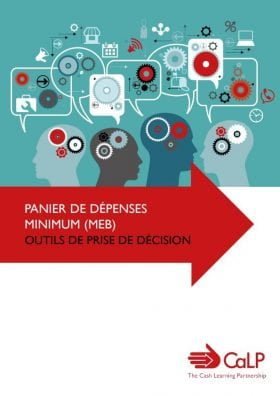Transferts monétaires à usages multiples
Les transferts monétaires à usages multiples sont des transferts monétaires non affectés que les personnes vivant en situation de crise peuvent utiliser pour couvrir leurs besoins essentiels. Par nature, il s’agit de la modalité d’aide qui offre le plus de choix, de flexibilité et de dignité aux bénéficiaires. De plus en plus de données montrent qu’il est plus pertinent en termes d’optimisation des coûts et de rapport coût/résultat de répondre à plusieurs besoins à la fois.
Cependant, cette modalité exige aussi des acteurs humanitaires qu’ils mettent en place de nouvelles manières de collaborer, à toutes les étapes du cycle de programme, et entre secteurs. Même s’il existe des outils fiables pour faciliter la collaboration, ils ne sont pas mis en œuvre à grande échelle et le recours aux transferts monétaires à usages multiples est encore ponctuel. Il reste à relever plusieurs défis si nous souhaitons intégrer efficacement les transferts monétaires à usages multiples au système humanitaire.
Contenu associé

Panier de dépenses minimum (MEB) – Outil de prise de décision
Guides et outils
Cet outil de prise de décision est fait pour accompagner les praticiens et les décideurs à travers les étapes clés du processus de calcul du MEB. Elle décrit les différentes étapes et approches possibles du processus d’élaboration du MEB, et donne des liens vers de nombreuses ressources complémentaires.

Orientations opérationnelles et boîte à outils pour les transferts monétaires à usages multiples
Guides et outils
Les présentes orientations opérationnelles et la boîte à outils qui l’accompagne réunissent une expertise mondiale sur les interventions monétaires. Elles apportent aux acteurs humanitaires des orientations complètes et pratiques afin d’évaluer la faisabilité des transferts monétaires, d’en déterminer la conception et d’en structurer la mise en oeuvre. Les...

Définition des Paniers de Dépenses Minimum (MEB) en Afrique de L’Ouest
Rapport
Au cours de l’année 2017, 5 pays d’Afrique de l’Ouest ont lancé un travail collectif de définition du panier de dépenses minimum, afin de mieux comprendre la contribution de l’aide humanitaire à la couverture des besoins de base des populations affectées et d’améliorer son impact. Ce processus, souvent fastidieux, a soulevé des défis techniques, mais également mis en...
Thematic lead
Latest
Aucun résultat trouvé
Contenu indisponible actuellement.




